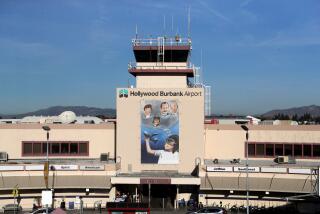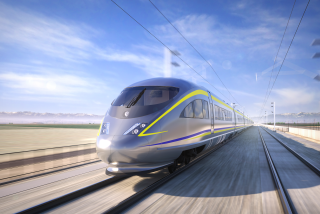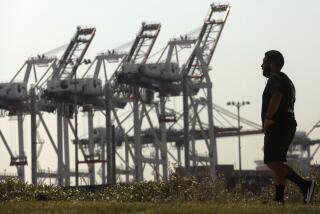Noise No Justification for Impasse
Burbank Mayor Dave Golonski and Councilwoman Stacey Murphy have demonstrated again why it has been so difficult for the Burbank-Glendale-Pasadena Airport Authority to find middle ground with the city of Burbank in the debate over a new terminal at the airport.
After reading their essay of Nov. 15, one can only ask, what is it they are pretending not to know?
They say they don’t know what the impacts of a new terminal would be or what measures would be in place to mitigate those impacts. This is total fiction.
Golonski and Murphy know full well what’s in the environmental reports. In fact, the environmental impacts of this project has been known for years. Burbank reviewed the environmental impact report (endorsed 100% by its airport commissioners, two of whom were city councilmen) and never mentioned noise as a concern. And it never contested the reliability of the report.
When the Federal Aviation Administration approved the final environmental impact statement (again, a document approved by all three Burbank commissioners on the authority), the current City Council mounted a legal challenge over the noise issue. In March, a court decision backed the report. The city lost and chose not to appeal.
One wonders how Golonski and Murphy can now blithely assert, “Everyone intuitively knows that an expanded airport will bring increased noise as well as other impacts,” a point rejected by the court.
When the council members say they don’t know “if there will be a 10% or 100% increase in noise,” they are blowing enough smoke to cause a smog alert. Both environmental reports are clear on two points: Any aircraft noise increases will occur whether there is a new terminal or not and, in any case, will not exceed the FAA’s threshold of “significance” in the noise impact area. Besides, aircraft noise will always remain a fraction of what it was in 1978 when the authority acquired the airport.
The bottom line is that noise is not an appropriate justification to block this project. Will there be noise? Of course. Will it be so egregious as to justify an exception to federal law? Not likely.
But that’s what a Part 161 study will determine. And that is precisely what Burbank is afraid of. The city cannot justify the restrictions it seeks.
The authority has been quite clear in its commitment to noise mitigation. We already have $18 million in grants for noise insulation of homes and schools.
The authority will eventually cover the $100-million tab to reduce the noise impact area to as close to zero as possible.
The council members’ problem is that they don’t like what the law says, and not having found comfort in court, they rely instead on misinformation and intransigence to see them through to their goals of a mandatory curfew and a cap on scheduled airline business.
They are using the terminal as leverage, holding it hostage so that sooner or later the FAA will be forced to grant a mandatory curfew. This approach clashes dramatically with the legal system set in place by Congress. Since 1990, it has been illegal for an airport to adopt curfews on Stage 3 airline jets and other noise restrictions unless the airport can demonstrate that the benefits of the curfew would outweigh the harm to interstate commerce.
No matter how much leverage Burbank thinks it has by blocking the terminal, the FAA by law cannot grant the curfew unless it is shown to be justified on the grounds of noise alone. And Burbank knows it cannot produce such justification.
The Burbank Airport Part 161 noise study will be the first attempt to quantify this impact. That is when the microscope will focus on the actual benefits of Burbank’s proposed curfew. Although the intention is clearly to find justification for the curfew, one outcome could be that the benefits of a curfew will be shown to be relatively small. Then where will we be?
Golonski and Murphy signaled what the city’s solution will be if no curfew is forthcoming: Allow only a relocated terminal the same size as today’s terminal.
This is backward thinking at best, especially if one considers that Golonski and Murphy are voting in lock-step with colleagues to approve incredible amounts of new development elsewhere in Burbank that will increased traffic and noise they say they are trying to prevent.
Even if Burbank is successful in perpetuating overcrowded, inadequate airport facilities, would that ensure its goal of capping airport activity? The crystal ball may have a few foggy spots, but it is clear that the future holds more passengers and more flights, for Burbank and every other airport in Southern California.
It’s up to Burbank to make a move, because the city has left the authority with nowhere to go, and that never leads to solutions.
More to Read
Sign up for Essential California
The most important California stories and recommendations in your inbox every morning.
You may occasionally receive promotional content from the Los Angeles Times.










